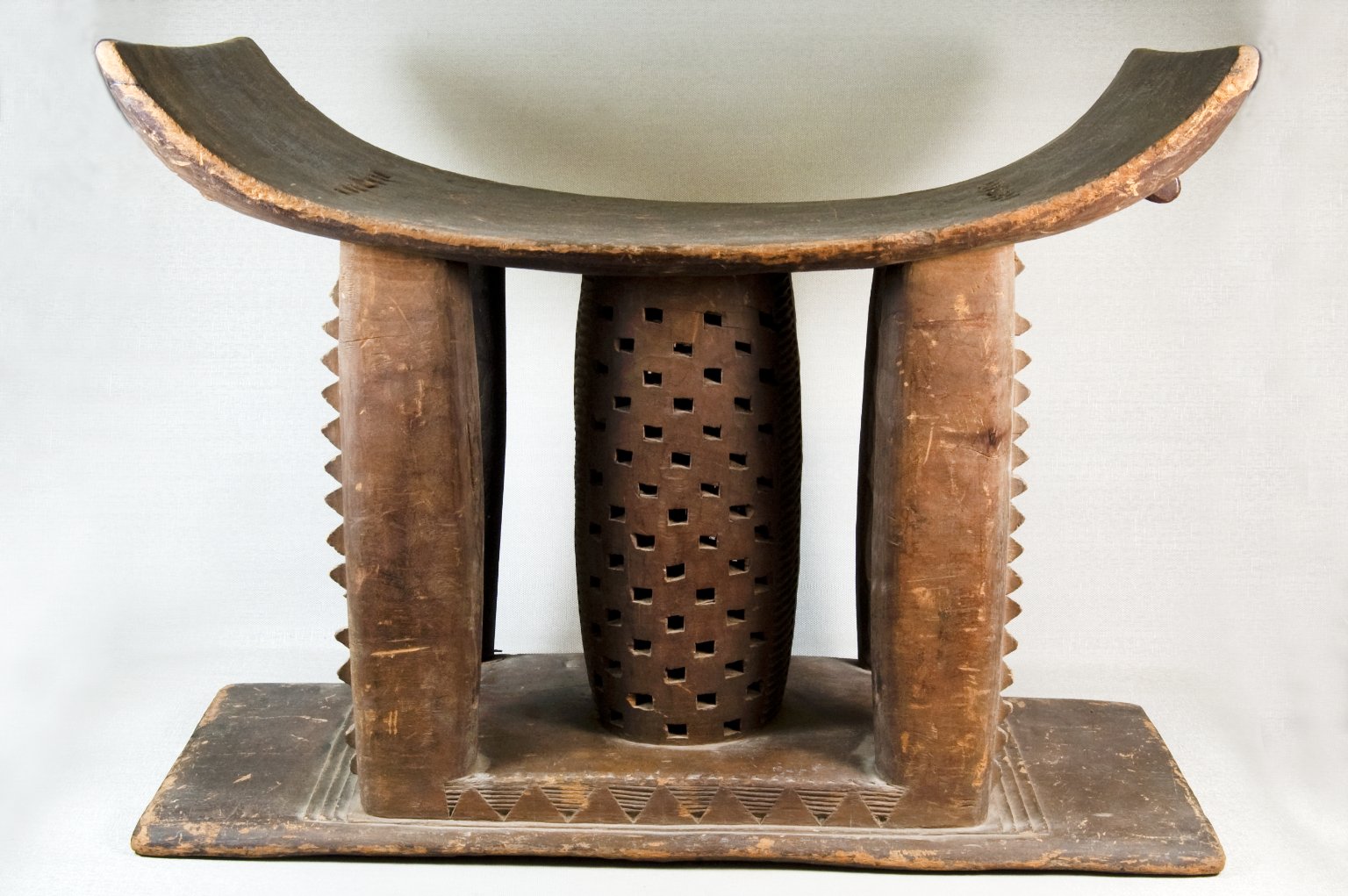The Golden Stool is the supreme representation of authority in Asante and the regal and divine seat of Ashanti monarchs.
Since the 17th century, the Golden Stool (full name, Sika Dwa Kofi) has served as the Ashanti Kingdom’s emblem of authority.
Oral history holds that the Golden Stool, which was adorned with golden bells, was conjured by Okomfo Anokye, a High Priest and one of the two founders of the Ashanti Confederacy.
The golden stool was made to fall from the sky and settle at the feet of Osei Tutu I, the first Asantehene (King) of Ashanti.
The Ashanti have held the view that the Golden Stool contains the spirit of the Ashanti people ever since Osei Tutu I.
Also Read: History of the Asante Kingdom in Ghana
The Golden Stool’ the Ashanti’s most Valuable Property
The gold Stool is 24 inches long, 12 inches broad, and stands 18 inches tall. It was so precious that no one was permitted to sit on it, and it was never allowed to touch the ground.
Over the Golden Stool, every new Ashante monarch descends and ascends without touching it. Without the Golden Stool, which often sat on its own throne next to the Asantehene, no one could be regarded as a legitimate king.
The Golden Stool has a platform that is 61 cm broad and 30 cm deep, with a curved seat that is 46 cm high. Its whole surface is covered with gold inlays, and bells hang from it to alert the monarch to danger.
Few people have seen it, and only the king, queen, real prince Ofosu Sefa Boakye, and select advisors are aware of its whereabouts.
For the chiefs, replicas have been made, and during their burial, these replicas are ceremonially blackened with animal blood as a reminder of their dominance over previous generations.
The Stool was considered to be the Ashanti’s most valuable property. It was consulted by their war commanders before they went to war.
The Golden Stool gained even more acclaim as time went on and the Ashanti continued to defeat their enemies and expand their empire.
Other civilizations have imitated the general design of Asante stools, which are now distributed all over the world.
The entire Asante Kingdom of Ghana would fall into disorder if the Golden Stool were ever destroyed or taken by the enemy.
According to legend, Okomfo Anokye, the priest or traditional healer of the Ashanti empire who is regarded as the greatest and wisest sage of the Asante people who would cofound the Asante empire, issued the statement above as a warning.
British Empire-led War
By the 19th century, the Ashanti had started a string of conflicts with the British Empire, who had effectively taken over control of Ghana’s coastal area.
Between 1824 and 1874, there were three Anglo-Ashanti Wars, during which the British and their African allies increased their grip over Ashanti Territory.
Asantehene Agyeman Prempeh was captured and exiled in the Seychelles Islands after being beaten by the British and their Indian and African allies during the fourth Anglo-Ashanti War.
The British Governor of the Gold Coast, Sir Frederick Mitchell Hodgson, demanded to sit on the Golden Stool, which led to the last war (1900), which was really a revolt headed by Yaa Asantewaa, the Queen Mother and Gate Keeper of the Golden Stool.
Yaa Asantewaa
Yaa Asantewaa’s comment served as the catalyst for the Word of the Golden Stool insurrection, which broke out on March 28, 1900.
1,000 British and Allied soldiers as well as more than 2,000 Ashanti soldiers perished in the fierce combat.
Both totals exceeded the aggregate number of fatalities from all prior Anglo-Ashanti conflicts. However, the battle came to an end after six months.
Although Yaa Asantewaa was taken prisoner by the British in 1901 and promptly deported to the Seychelles, where she passed away in 1921.
The Stool was never taken by the British. It was discovered in 1920 by a party of African railroad builders after being concealed by the Ashanti.
They destroyed it by removing the gold decorations before being judged by the Ashanti and given a death sentence.
However, when British colonial officials became involved, they were banished from the Gold Coast Colony.
Also Read: Powerful African Warrior Queens in History You Never Knew
Conclusion
The British promised they wouldn’t meddle with the Golden Stool ever again after discovering how important it was to the Ashanti.
The Stool has been returned to its ceremonial location and is still used in rituals to crown the Asantehene, despite the fact that he is now regarded as a traditional head of state with no political authority.
The Golden Stool is still revered as a representation of the erstwhile Ashanti Empire, nevertheless.
